by Adam Djurdjulov, MD:
I vividly remember my last day of anesthesiology residency at Stanford. I had chosen to do my last month at the Valley, the county hospital where I could refine my skills across a wide range of cases including pediatrics, neurosurgery, general surgery, OB, regional and trauma. In three short months I’d be starting my first case in private practice, so this month was the closest I could get to my new job. The great attending anesthesiologists at the Valley pretty much gave me the reins, and it was a fantastic month that definitely boosted my confidence. But as I walked out of the hospital after my very last resident shift, my elation was tempered more than I was prepared for by knowing the next time I induced anesthesia, it would be without an attending…
Fast forward almost a year, and life in private practice has been both eye-opening and really gratifying. With CA-3s finishing residency in a few weeks (and also for CA-1 and 2s), I thought it might be beneficial to share some perspective and advice garnered through my transition from residency to independent practice. Just as they don’t teach you much about intricacies of anesthesia billing in residency, neither do you learn a lot about how to manage what will likely be one of the most stressful transitions of your professional career.
Orientation makes a difference
I was lucky. My group starts off every new person with a proctoring period. Senior partners observe your practice over two weeks in 20 cases of varying complexity prior to making a firm offer of employment. It was stressful at times, but in hindsight, the time spent proctoring was equally beneficial to both parties. My performance during that provisional period gave the group confidence that I was clinically competent. Although I would do the proctored case without assistance or clinical advice, it was also a time for 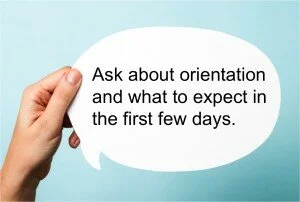 me to learn the system with a partner who was very willing to answer questions about the logistics of practicing anesthesia in a new hospital.
me to learn the system with a partner who was very willing to answer questions about the logistics of practicing anesthesia in a new hospital.
For me, placing a central line as an attending was much less stressful initially than making sure that I’d be on time for my case with narcotics in hand, have some working knowledge of the medical record system, and know a bit about local practices and surgeon preferences. Colleagues of mine who started in practice weren’t as fortunate, and literally went in for their first day of cases with little to no hands-on orientation.
Ask about how those first few days will go in your new group, and if there’s not a solid orientation session, ask if you can at least shadow a partner for a few cases prior to starting on your own.
There’s no ramp-up period
Private practice is where it gets real, very quickly. You’re not a resident anymore — you’re the doctor, the REAL doctor. Finally, after all those years of training, you’ll be making the hard decisions and will be expected to perform at the same clinical level as a senior partner who’s been administering anesthetics and managing critically ill patients for 25 years.
You won’t have a few weeks of young, healthy laparoscopic appendectomies to get the hang of things. No, you’ll be managing a patient whose BMI is >50, who has no IV access 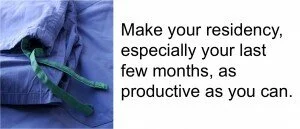 and severe COPD with resting saturations in the low 90s on 4L O2, for a case requiring steep Trendelenburg. Or you’ll finish up a day of sedations for EGDs and colonoscopies, and then be called urgently to the OR for an ASA 5E patient with brain herniation. In talking with friends, I think many of us who went straight into private practice were a bit shocked at how sick the average patient population at a community hospital really is. We weren’t expecting the steep ramp-up. Sometimes your patients may be even more at risk because of less pre-operative work-up than at an academic center.
and severe COPD with resting saturations in the low 90s on 4L O2, for a case requiring steep Trendelenburg. Or you’ll finish up a day of sedations for EGDs and colonoscopies, and then be called urgently to the OR for an ASA 5E patient with brain herniation. In talking with friends, I think many of us who went straight into private practice were a bit shocked at how sick the average patient population at a community hospital really is. We weren’t expecting the steep ramp-up. Sometimes your patients may be even more at risk because of less pre-operative work-up than at an academic center.
So make your residency, especially your last few months, as productive as you can. Search out the sick patients, formulate solid anesthetic plans without the help of your attending, and then execute the plan and manage complications as much as you can safely without assistance. Be up front with your attending and ask for some space for induction and extubation. It feels different not to have someone right next to you, and getting used to it now as much as you can will definitely pay dividends later.
Utilize your resources
Residency gives you a strong foundation on which to start your career, but you’ll be amazed at how often you’ll be forced to adapt to new and complex clinical and ethical situations you’ve never seen before. As I mentioned previously, be prepared for this very steep learning curve, one that’s very similar to your first few months of your CA-1 year. It can be very disconcerting to be faced with a clinical or ethical situation you feel unprepared to handle, but I can assure you it will happen during your transition.
can be very disconcerting to be faced with a clinical or ethical situation you feel unprepared to handle, but I can assure you it will happen during your transition.
It’s important to recognize when you feel uncomfortable about how you’ll care for a complex patient. Remember, you’re well trained and have the foundation to handle the worst complications. But, as you already know, there’s more than one way to administer a safe anesthetic. Someone else’s perspective may help either to solidify a decision or to change a plan that might not be the best option. This isn’t the time to be prideful – in these situations, don’t be afraid to ask questions of your more experienced colleagues or even your past residency mentors. These simple conversations can save you from a lot of unnecessary stress. More importantly, they can make a big difference in patient outcomes.
Know your patient
By the end of CA-3 year, you’re likely able to quickly review a patient’s chart and, after a brief history and exam, formulate an anesthetic plan. Most academic programs, however, have robust pre-operative clinics to identify key clinical issues that will affect your anesthetic management. You won’t have that luxury in private practice, as most groups don’t 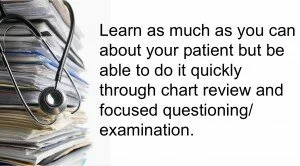 have the resources for a dedicated pre-operative clinic.
have the resources for a dedicated pre-operative clinic.
Missing important clinical details is easy if you’re not taking time to review a patient’s medical history, past anesthetic records, echo or stress test results, etc. Our group’s practice is to make an attempt to call the patient the night before, and it definitely helps build rapport with your patient. In addition, the phone call allows you to fill in the blanks about medical history and tweak perioperative medicine doses that may affect your management. As the Perioperative Surgical Home (PSH) model led by physician anesthesiologists becomes more prevalent, this type of practice will likely soon become the norm and not the exception.
Just as you’ve done in residency, learn as much as you can about your patient but be able to do it quickly through chart review and focused questioning/examination. You’ll establish yourself as a reliable consultant with both the patient and your colleagues if you know the patient’s history and are able to apply that knowledge when it counts.
Residency is just the beginning, not the end
Although your time in residency will at times feel like it will never end, remember that your time there is just the beginning of what will hopefully be a long and rewarding career in anesthesiology.
From the first cases as a CA-1 where you’re literally trying to remember how to set up a room, to the last month where you’re trying to prove mainly to yourself that you’re ready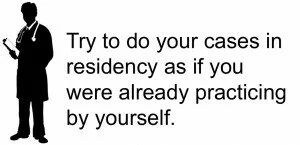 to do this thing on your own, try to do your cases in residency as if you were already practicing by yourself. Learn about your patients, take ownership of your anesthetic plans for every case, and take a leadership role in constructing a solid anesthetic plan before your attending dictates one for you.
to do this thing on your own, try to do your cases in residency as if you were already practicing by yourself. Learn about your patients, take ownership of your anesthetic plans for every case, and take a leadership role in constructing a solid anesthetic plan before your attending dictates one for you.
During your cases, ask yourself “what if” questions constantly about what could possibly go wrong and how would you react and treat the situation. Then, ask your attending about areas where you feel uncomfortable. This is how you’ll make residency pay off for you in the long run, because again, it’s the last time you’ll have such a great network of support right beside you. Utilize it for all it’s worth because you’ll definitely know it when it’s gone!
It’s not too early to start oral board exam preparation
Not only does residency prepare you for solo practice, but one of its main goals is to prepare you to become board certified. While you can still practice without board certification, competitive groups will likely require board certification as terms of maintaining employment, so passing those exams should be a top priority. Changes to the board exam system are in progress, with a transition to a staged system utilizing Basic, Advanced and Applied exams.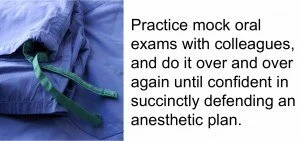
I have no ties to any board prep program and can only speak to some great resources that helped me on the oral board exam. Ultimate Board Prep offers six practice sets that were fantastic. Each book contained eight different mock oral board questions and eight extra topic questions, all with full answers that helped tie together a lot of important anesthetic management concepts. Yao and Artusio’s Anesthesiology: Problem-Oriented Patient Management is also an excellent resource that concisely summarizes management of key clinical issues across all areas of anesthesia. Most important, however, is practicing mock oral exams with colleagues, and doing it over and over again until you feel confident in your ability to succinctly defend an anesthetic plan.
In retrospect, having reviewed these types of resources and practicing more mock orals during residency would likely have made me a better resident, and everyone I’ve talked to has had similar thoughts. With this in mind, try to build in some oral board preparation time during each month of residency. Focus on the clinical subset of patients you’re dealing with that month and practice oral board questions related to clinical situations about that patient subset. I can assure you that finding time to study and practice oral exams while working in a busy private practice is difficult and stressful. If you can get a bit of practice in during residency, it will pay dividends later. More importantly, it will make you a better clinician.
Don’t be a locker slammer
One of the best pieces of advice during my residency at Stanford came from Michael Champeau, MD, adjunct clinical professor and past CSA President. In the context of a talk to CA-3 residents about life outside of residency, he advised, “Don’t be a locker slammer.” The advice is simple: don’t be the one who’s in such a hurry to get home after your last case that the slam of your locker wakes up PACU patients from their post-anesthetic slumbers.
There are many manifestations of this sage advice, but the bottom line is this: in a market that’s saturated with anesthesia providers, you need to find a way to prove your value, not only to your new group, but to your patients, to your hospital where your group has a contract, and ultimately to the field of anesthesiology.
Treat your nursing, anesthesia and OR staff colleagues with the utmost respect as they’re an integral part of your team. If you get done early, find out which of your partners might need a break in the OR before you leave. Accept that unscheduled add-ons are part of the equation and do them without complaints. Show that you’re a valuable member of your group by offering your ancillary skills to assist with committee or project work.
Call your patients the night before and give them that extra bit of reassurance before you meet them the next day. Follow up on your patients to see how they’re doing and modify your practice as needed to provide even smoother anesthetics. Take CME seriously and continue to advance your clinical skill set by asking more questions, not less. Employ  evidence-based ERAS (Enhanced Recovery after Surgery) protocols for cases like elective bowel resections in order to improve patient outcomes, decrease length of stay, and reduce hospital cost. Finally, get involved in advocacy starting at the local level, and don’t ignore the immeasurable value of the example you set everyday in your hospital setting.
evidence-based ERAS (Enhanced Recovery after Surgery) protocols for cases like elective bowel resections in order to improve patient outcomes, decrease length of stay, and reduce hospital cost. Finally, get involved in advocacy starting at the local level, and don’t ignore the immeasurable value of the example you set everyday in your hospital setting.
Best wishes to all the upcoming residency graduates, and good luck to all those making the transition from residency to independent practice soon!
This article was originally published in CSA Online First on May 26, 2015. Dr. Djurdjulov has graciously agreed to a reprint on this site.


















